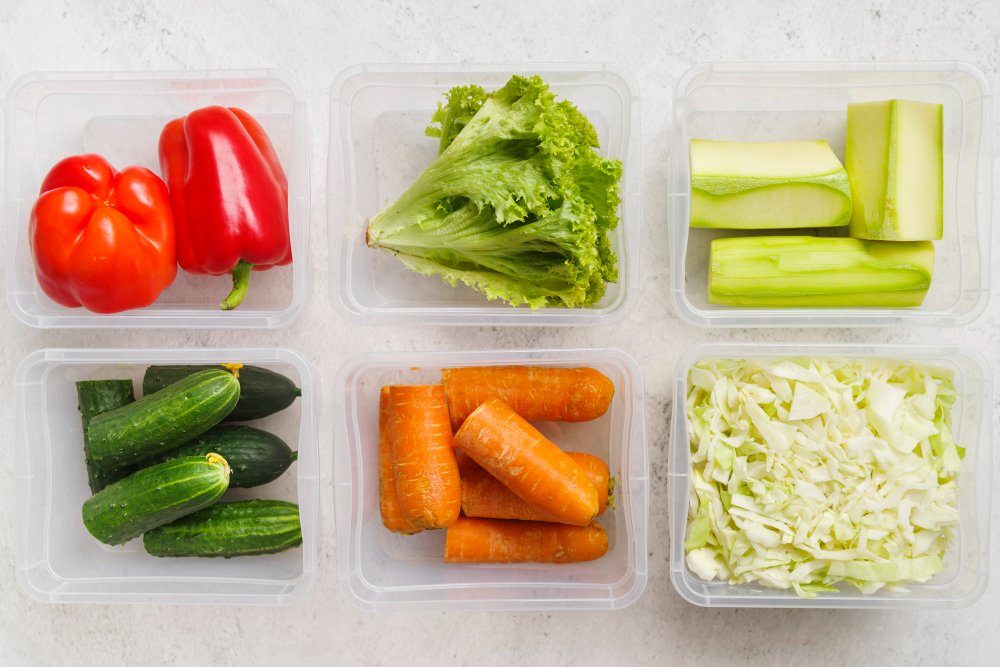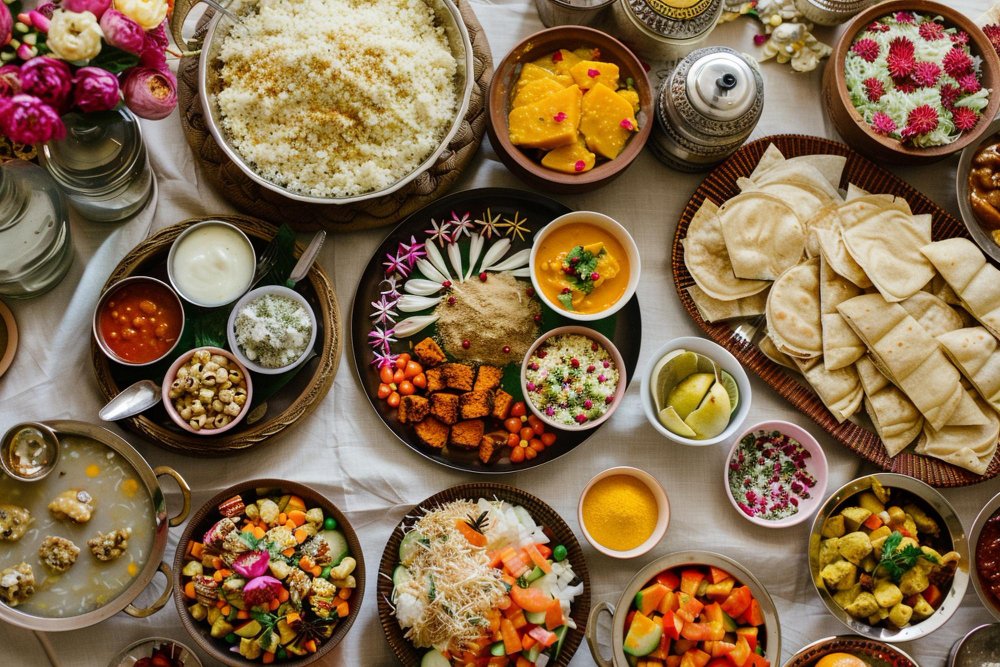In today’s fast-paced world, where food wastage is a growing concern, the use of plastic food containers has become an essential practice for both households and businesses. These containers offer a practical solution for preserving food, reducing waste, and ensuring that meals stay fresh for longer periods. At Maxxfour.com, we understand the importance of sustainable living and the role that plastic food containers play in it. This comprehensive guide explores how plastic food containers can help save food, their benefits, and tips on choosing the right ones.
Role of Plastic Food Containers in Food Preservation
Plastic food containers are designed to create an airtight environment, which is crucial in preserving the freshness and quality of food. By sealing food tightly, these containers prevent exposure to air, moisture, and contaminants, which are the primary causes of food spoilage. This simple yet effective method of food storage can significantly extend the shelf life of leftovers, fresh produce, and even pre-cooked meals.
- Preventing Spoilage and Waste: One of the most significant benefits of using plastic food containers is their ability to prevent spoilage. When food is stored properly in airtight containers, it is less likely to go bad quickly. This is particularly important for perishable items like fruits, vegetables, and dairy products, which can spoil within days if not stored correctly. By keeping these items in plastic containers, you can reduce the amount of food that ends up in the trash.
- Maintaining Freshness and Flavor: Plastic food containers help maintain the freshness and flavor of your food. Whether it’s a batch of homemade soup, a salad, or sliced fruits, storing them in plastic containers keeps them tasting as good as when they were first prepared. The airtight seal ensures that no external odors or moisture can seep in, which can alter the taste and texture of your food.
- Portion Control and Meal Planning: Another way plastic food containers contribute to saving food is by aiding in portion control and meal planning. By dividing meals into individual portions and storing them in separate containers, you can easily manage your diet and avoid overeating. This also helps in reducing food wastage, as you are less likely to throw away uneaten portions. Moreover, meal prepping becomes more organized, allowing you to plan your meals for the week and store them efficiently.
Also, explore Which Food Is Good For Weight Loss In India By Maxxfour.Com
Benefits of Using Plastic Food Containers
The use of plastic food containers offers numerous benefits beyond just food preservation. Here are some of the key advantages:
- Durability and Reusability: Plastic food containers are highly durable and can withstand daily use, making them a cost-effective solution for food storage. Unlike disposable packaging, plastic containers can be reused multiple times, reducing the need for single-use plastics and contributing to a more sustainable lifestyle.
- Lightweight and Portable: Plastic food containers are lightweight and easy to carry, making them ideal for packing lunches, snacks, or even full meals for work, school, or travel. Their portability ensures that you can take your meals with you wherever you go, reducing the temptation to buy takeout and minimizing food waste.
- Versatility in Storage: Plastic containers come in various shapes and sizes, making them versatile for storing different types of food. Whether you need to store dry goods, liquids, or leftovers, there’s a plastic container that fits your needs. Some containers are even designed for specific purposes, such as keeping salads fresh or storing liquids without spilling.
- Space-Saving Design: Many plastic food containers are designed to be stackable, which helps save space in your refrigerator, pantry, or cabinets. This organization feature allows you to maximize storage space and keep your kitchen tidy and clutter-free.
- Microwave and Freezer Safe: Most plastic food containers are safe for use in microwaves and freezers, adding to their convenience. You can easily reheat leftovers directly in the container or store food in the freezer for long-term preservation. Just make sure to check the manufacturer’s guidelines to ensure the container is suitable for these purposes.
Choosing the Right Plastic Food Containers
Not all plastic food containers are created equal, and choosing the right ones can make a significant difference in food preservation and sustainability. Here are some factors to consider when selecting plastic food containers:
- Material Safety: When choosing plastic food containers, it’s important to ensure that they are made from food-grade plastic, which is free from harmful chemicals like BPA (Bisphenol A). BPA-free containers are safer for storing food and do not leach harmful substances into your meals, even when heated.
- Seal and Locking Mechanism: The effectiveness of a plastic food container largely depends on its sealing mechanism. Look for specific containers with tight-fitting lids that create an airtight seal to keep your food fresh and healthy. Some containers also come with locking mechanisms that provide an extra layer of protection against leaks and spills.
- Size and Capacity: Consider the size and capacity of the containers based on your storage needs. If you’re meal prepping for the week, you may need larger containers. For snacks or single servings, smaller containers may be more appropriate. Having a variety of sizes on hand can help you store different types of food more efficiently.
- Stackability and Storage: Stackable containers are ideal for saving space in your kitchen. Look for containers that can be neatly stacked on top of each other without compromising their seal. This specific feature is especially useful for those with limited storage space.
- Temperature Resistance: If you plan to use your plastic containers for both freezing and microwaving, make sure they are designed to withstand extreme temperatures. Containers that are microwave-safe and freezer-safe will not warp or crack when exposed to heat or cold.
Tips for Using Plastic Food Containers Effectively
To get the most out of your plastic food containers and ensure they help you save food, follow these tips:
- Label and Date Your Containers: Labeling your containers with the contents and date of storage can help you keep track of what’s inside and when it was stored. This practice is particularly useful for items stored in the freezer, where it can be easy to forget what’s inside.
- Avoid Overfilling: When storing food, avoid overfilling the containers. Leave some space at the top to allow for expansion, especially if you’re freezing liquids. This prevents the container from leaking or bursting.
- Clean and Dry Properly: After each use, make sure to clean your plastic food containers thoroughly with warm, soapy water. Allow them to dry completely before storing food to prevent mold or bacteria growth.
- Rotate Your Stock: Practice the “first in, first out” method by using older food items before newer ones. This ensures that food is consumed before it spoils, reducing waste.
- Reuse and Recycle: Reuse plastic containers as much as possible, and when they reach the end of their lifespan, recycle them according to your local recycling guidelines.
Conclusion
Plastic food containers are a practical and efficient solution for preserving food, reducing waste, and making meal preparation easier. At Maxxfour.com, we believe in the importance of sustainable living, and using plastic food containers is a simple yet effective way to contribute to this goal. By choosing the right containers, using them effectively, and adopting good food storage practices, you can save food, save money, and reduce your environmental impact.



